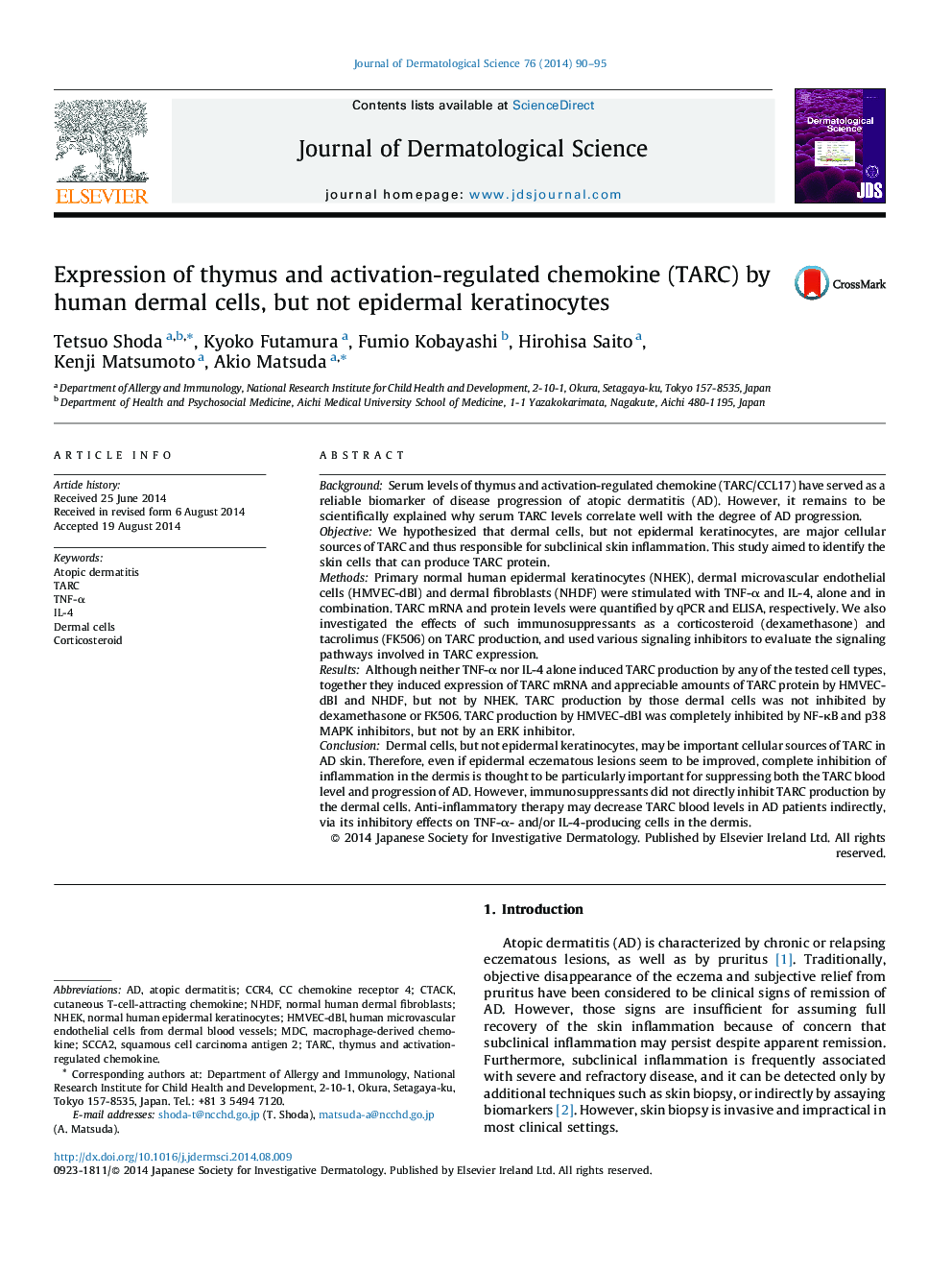| کد مقاله | کد نشریه | سال انتشار | مقاله انگلیسی | نسخه تمام متن |
|---|---|---|---|---|
| 3212709 | 1203194 | 2014 | 6 صفحه PDF | دانلود رایگان |

• TARC has served as a biomarker for AD.
• Serum TARC levels are associated with the degree of subclinical inflammation.
• Dermal, but not epidermal, cells can produce appreciable amounts of TARC.
• Inhibition of dermal inflammation is crucial for suppressing the progression of AD.
BackgroundSerum levels of thymus and activation-regulated chemokine (TARC/CCL17) have served as a reliable biomarker of disease progression of atopic dermatitis (AD). However, it remains to be scientifically explained why serum TARC levels correlate well with the degree of AD progression.ObjectiveWe hypothesized that dermal cells, but not epidermal keratinocytes, are major cellular sources of TARC and thus responsible for subclinical skin inflammation. This study aimed to identify the skin cells that can produce TARC protein.MethodsPrimary normal human epidermal keratinocytes (NHEK), dermal microvascular endothelial cells (HMVEC-dBl) and dermal fibroblasts (NHDF) were stimulated with TNF-α and IL-4, alone and in combination. TARC mRNA and protein levels were quantified by qPCR and ELISA, respectively. We also investigated the effects of such immunosuppressants as a corticosteroid (dexamethasone) and tacrolimus (FK506) on TARC production, and used various signaling inhibitors to evaluate the signaling pathways involved in TARC expression.ResultsAlthough neither TNF-α nor IL-4 alone induced TARC production by any of the tested cell types, together they induced expression of TARC mRNA and appreciable amounts of TARC protein by HMVEC-dBl and NHDF, but not by NHEK. TARC production by those dermal cells was not inhibited by dexamethasone or FK506. TARC production by HMVEC-dBl was completely inhibited by NF-κB and p38 MAPK inhibitors, but not by an ERK inhibitor.ConclusionDermal cells, but not epidermal keratinocytes, may be important cellular sources of TARC in AD skin. Therefore, even if epidermal eczematous lesions seem to be improved, complete inhibition of inflammation in the dermis is thought to be particularly important for suppressing both the TARC blood level and progression of AD. However, immunosuppressants did not directly inhibit TARC production by the dermal cells. Anti-inflammatory therapy may decrease TARC blood levels in AD patients indirectly, via its inhibitory effects on TNF-α- and/or IL-4-producing cells in the dermis.
Journal: Journal of Dermatological Science - Volume 76, Issue 2, November 2014, Pages 90–95